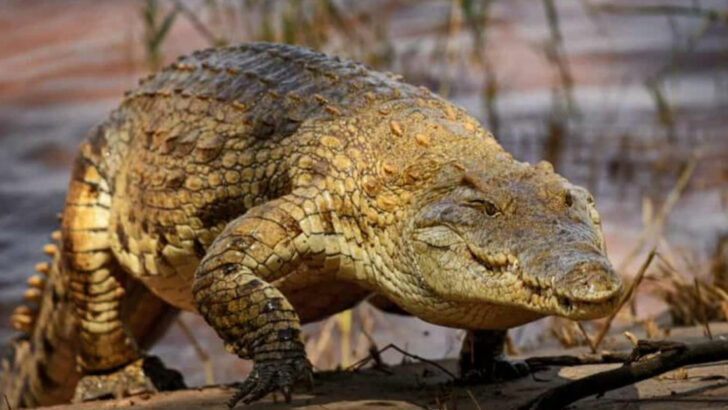The Sahara Desert, a vast expanse of sand and extreme temperatures, is an unlikely home for many creatures. Yet, nature always finds a way.
Among the most astounding examples of adaptation are the desert crocodiles.
These resilient reptiles defy all odds, thriving in one of the harshest climates on Earth.
This article delves into ten captivating aspects of these extraordinary crocodiles, each showcasing their unique adaptations and survival strategies.
Survival in Arid Climates

Astonishingly, desert crocodiles have adapted to survive in the Sahara’s unforgiving climate. Unlike their water-dependent cousins, these crocodiles have developed a remarkable ability to withstand arid conditions. They primarily reside in gueltas, which are natural water pools found in mountainous regions.
During the dry season, some may even aestivate, entering a state akin to hibernation, spending weeks without water in burrows to conserve energy.
This adaptation is crucial for enduring the harsh months when water is scarce. Despite the heat, these resilient creatures continue to thrive where few others can.
Unique Hunting Techniques

Desert crocodiles employ unique hunting techniques suited to their environment. Unlike their counterparts who hunt in open waters, these crocodiles have adapted to hunt in confined spaces of gueltas. Their stealthy nature allows them to silently approach prey.
They patiently wait with only their eyes and nostrils above the water, striking swiftly when an opportunity arises. This method is both energy-efficient and effective, allowing them to make the most of limited resources.
These tactics demonstrate their incredible adaptability, making them formidable hunters even in scarce conditions.
Social Behavior and Community
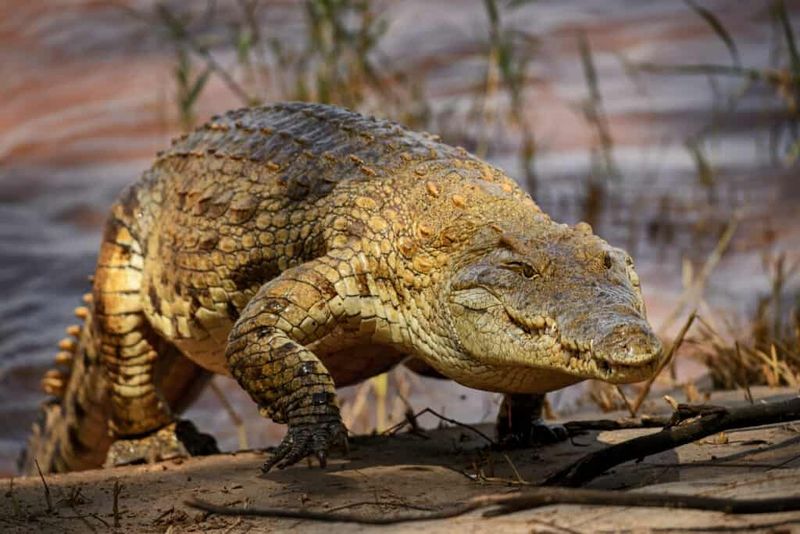
Interestingly, desert crocodiles exhibit social behavior that is quite fascinating. They often gather in groups around the limited water sources, displaying a level of social interaction rare among their species.
This community approach allows them to share resources and maintain stability in their habitat. These gatherings are essential for survival, helping to regulate access to water and food.
Such cooperation is a testament to their adaptability and intelligence, presenting a stark contrast to the solitary nature often associated with crocodiles in other regions.
Adaptations for Heat Regulation

To survive scorching temperatures, desert crocodiles have evolved strategies for heat regulation. One notable behavior is gaping, where they open their mouths wide to release body heat. This simple yet effective technique helps them maintain a stable body temperature.
They also utilize shaded areas and immerse themselves in water during peak heat. These adaptations are vital, allowing them to survive in an environment where temperatures can soar.
Their ability to regulate heat not only ensures their survival but also demonstrates their remarkable evolutionary success in the desert climate.
Ancient Ancestry

Desert crocodiles have an ancient lineage that traces back millions of years. Fossils found in the region suggest that their ancestors once roamed the Sahara when it was a lush, green landscape. Over millennia, as the climate transformed, these crocodiles adapted to the changing environment.
Their continued existence is a testament to their resilience and adaptability. This ancient ancestry connects them to a time when the Sahara was a verdant paradise, offering a fascinating glimpse into the past. It highlights the extraordinary journey these creatures have undertaken to survive.
Role in Ecosystem
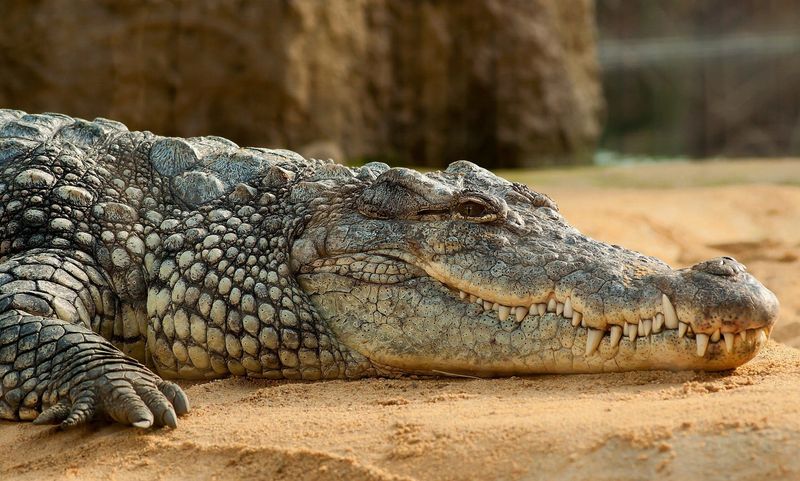
Desert crocodiles play a crucial role in their ecosystem. As apex predators, they help maintain the balance of species in their environment. By controlling fish and amphibian populations, they prevent any single species from dominating.
This balance is essential for the health of the gueltas, where a rich diversity of life depends on the crocodiles’ presence. Their role extends beyond predation; they also contribute to the ecological health by influencing nutrient distribution, showcasing their integral part in the desert ecosystem’s intricate web of life.
Conservation Challenges
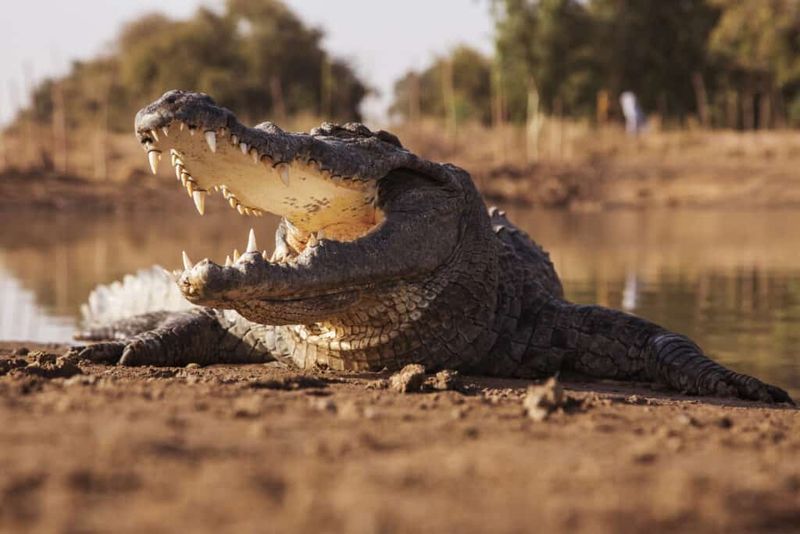
Despite their adaptations, desert crocodiles face numerous conservation challenges. Human activities, such as habitat destruction and climate change, threaten their survival. Efforts are underway to protect these unique reptiles, with conservationists working to preserve their habitats.
Raising awareness about their ecological importance is crucial for garnering support. These initiatives aim to ensure the continued existence of desert crocodiles, emphasizing the need for action to protect this extraordinary species.
Their plight highlights the broader issues facing wildlife in arid regions, underscoring the importance of conservation efforts.
Secret Water Sources
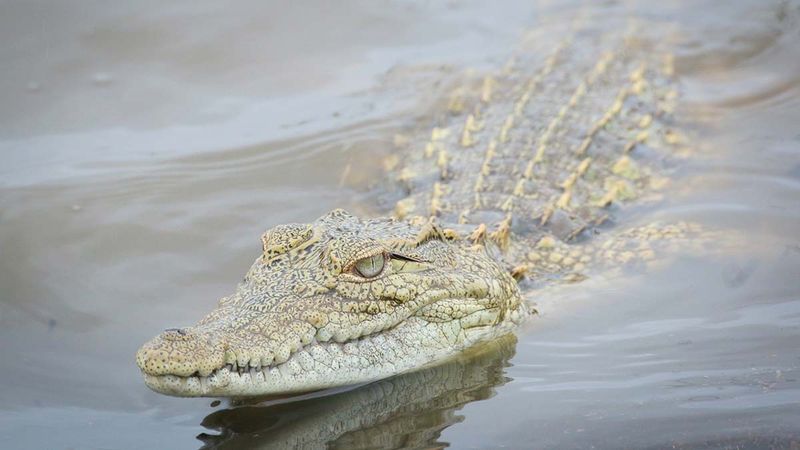
Hidden among the dunes, secret water sources become lifelines for Sahara’s crocodiles. These elusive creatures have an uncanny ability to locate and utilize these scarce resources.
In the blistering heat, they conserve energy by remaining submerged, surfacing only to breathe or seek food. This remarkable skill ensures their survival in such an unforgiving landscape.
Their sensitivity to minute environmental changes guides them to spots where water may be found. These crocodiles are living proof of nature’s ingenuity, thriving in places where life seems impossible. A truly astonishing adaptation!
Incredible Burrowing Abilities
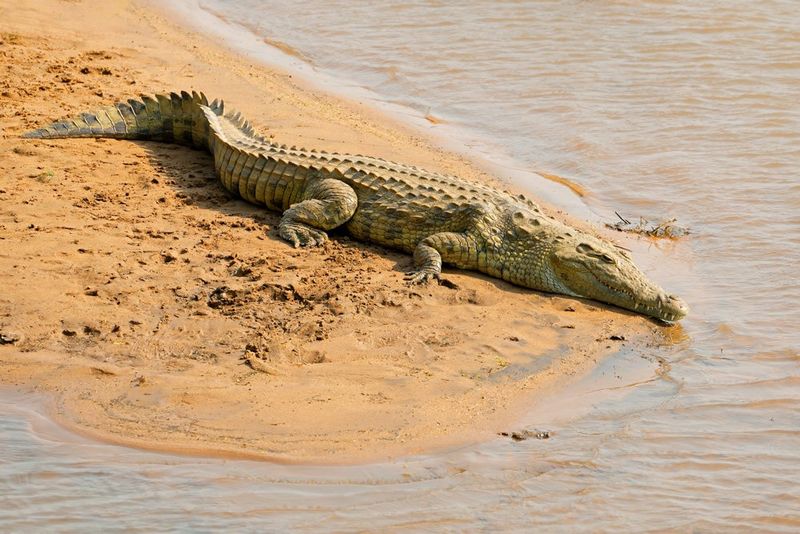
Burrowing deep into the Sahara’s sands, these crocodiles escape the relentless sun and extreme temperatures. Their burrows provide essential shelter, drastically lowering their metabolic rates to conserve energy.
This unique adaptation allows them to endure long periods of drought. Within these sandy retreats, they remain hidden, emerging only when necessary.
Their ability to dig and construct such shelters is a testament to their resilience and ingenuity.
These burrows, often shared with other desert wildlife, play a crucial role in their survival strategy, demonstrating extraordinary adaptation.
Acute Sensory Perception

With senses finely tuned to their environment, Sahara crocodiles exhibit extraordinary sensory perception.
Their acute hearing and keen eyesight allow them to detect prey and predators from afar. This heightened awareness is essential in the sparse desert, where opportunities are rare, and threats can approach silently.
They can sense vibrations through the ground and water, alerting them to disturbances.
This exceptional ability ensures they remain vigilant and responsive to changes, crucial for survival in such a hostile environment. Their sensory skills are a fascinating aspect of their adaptation.

